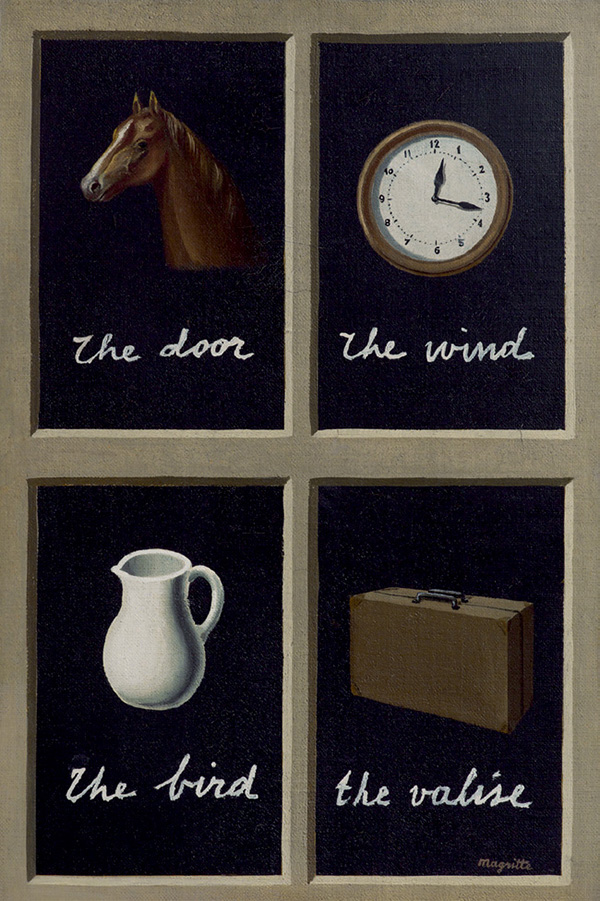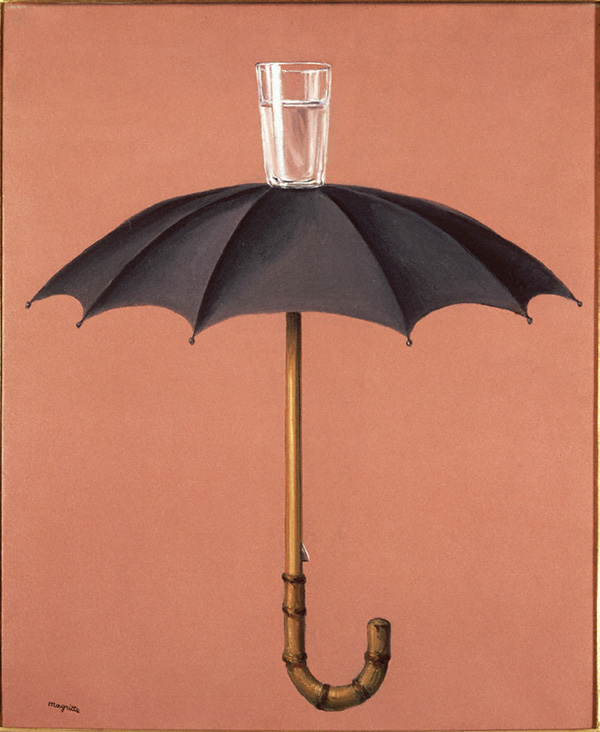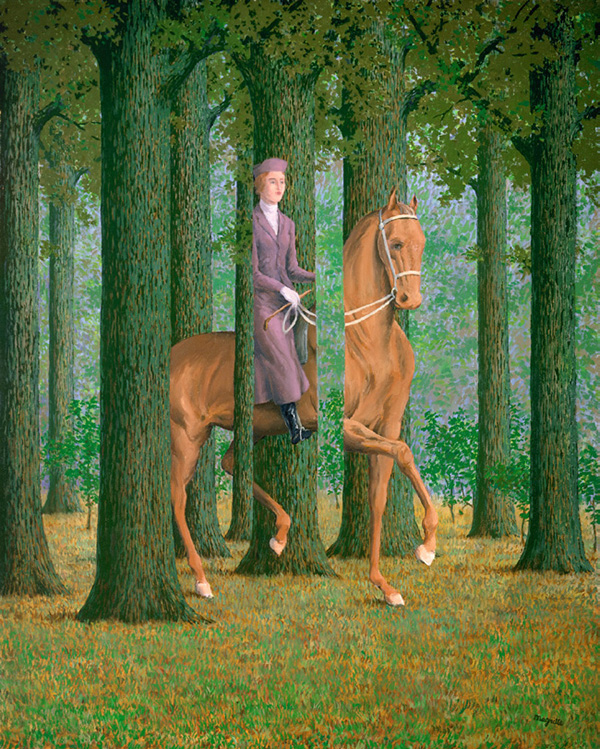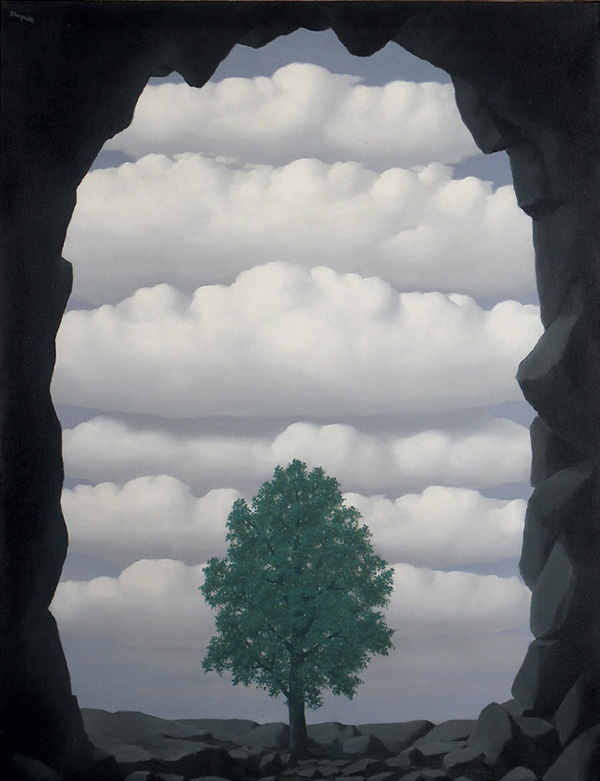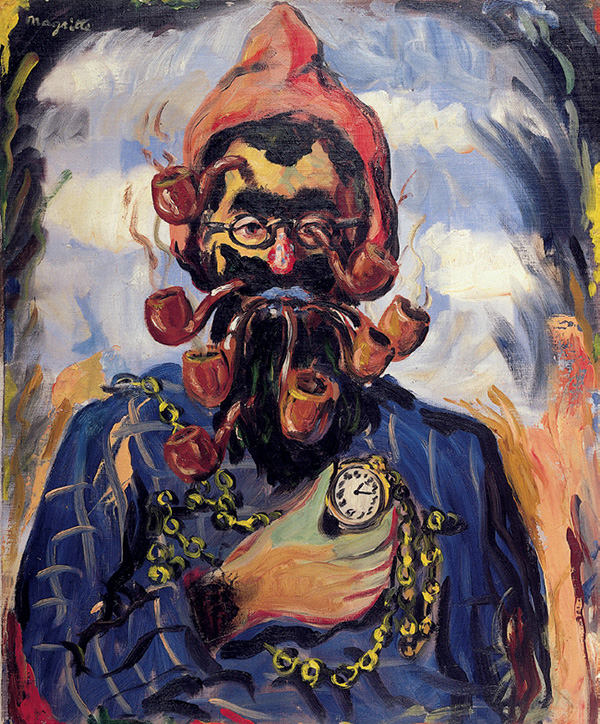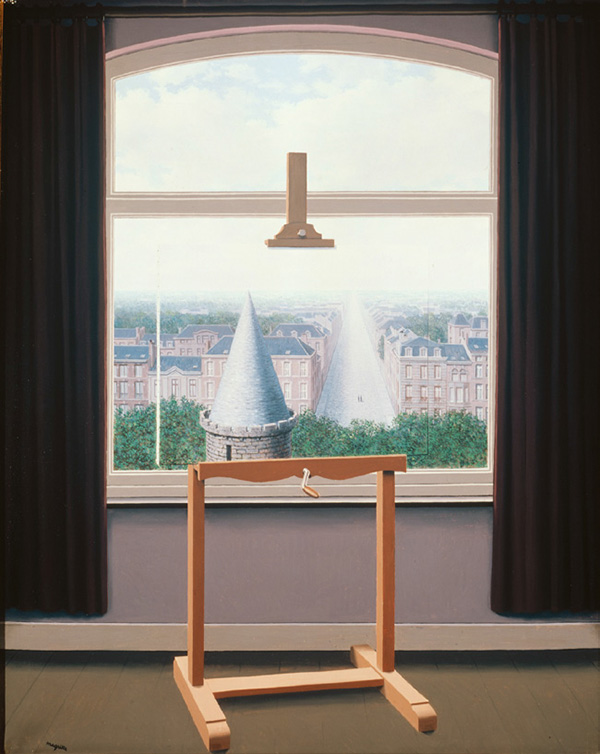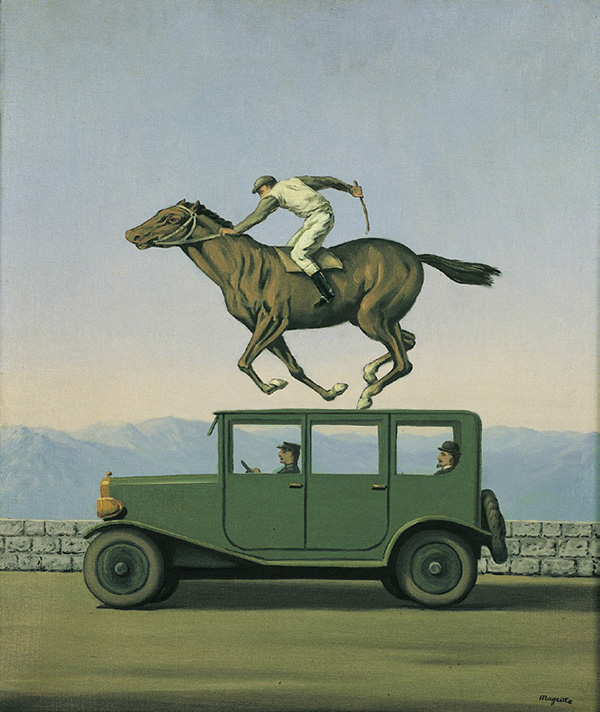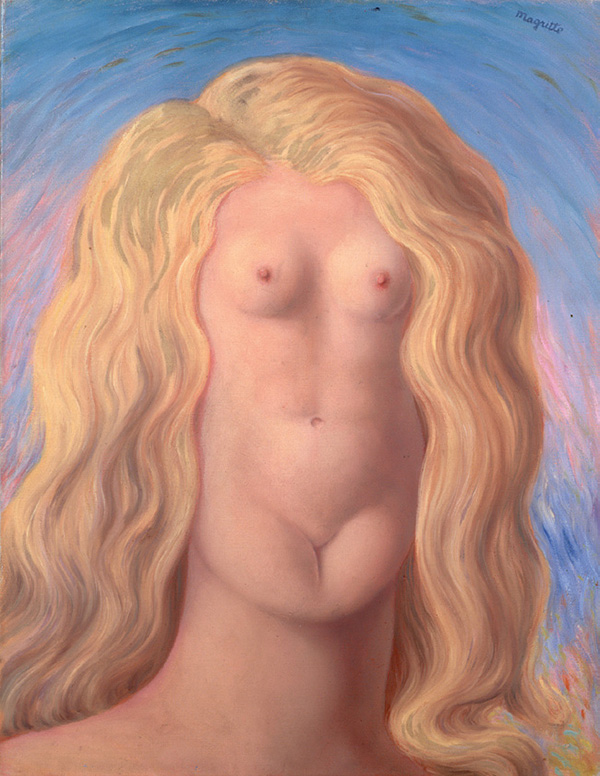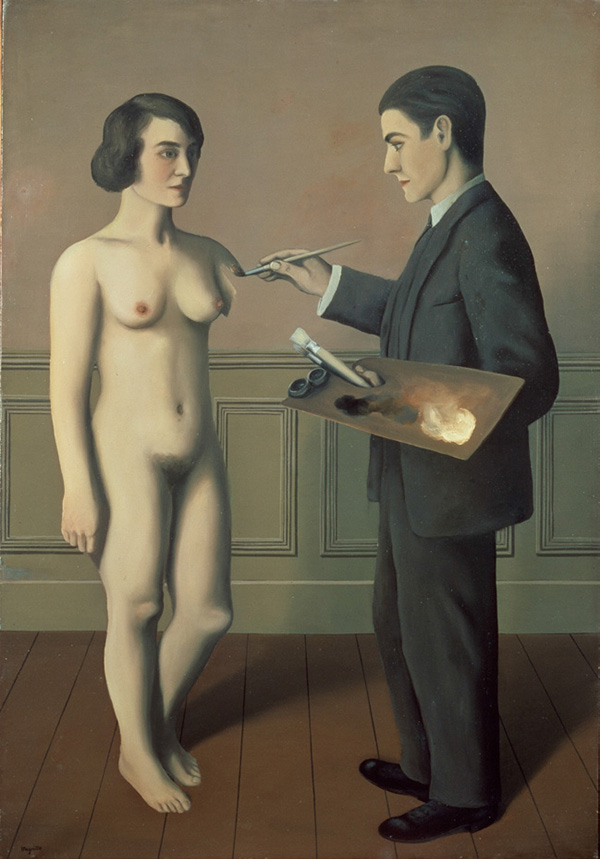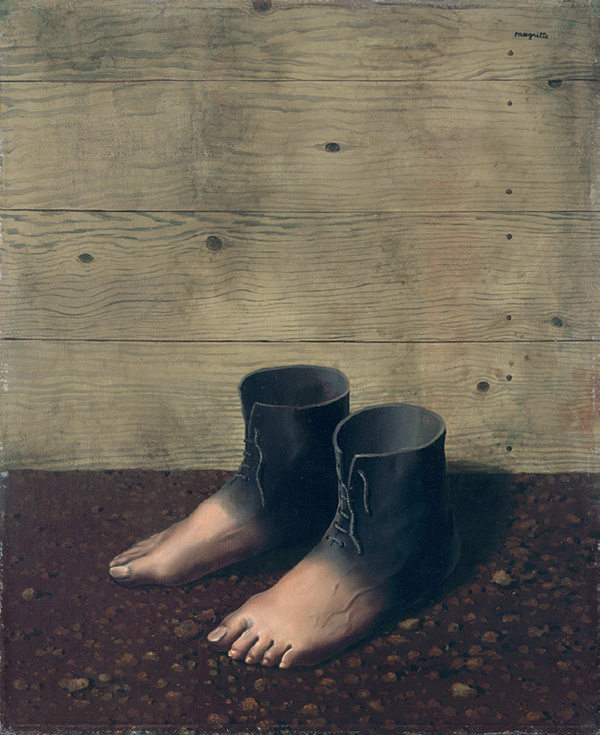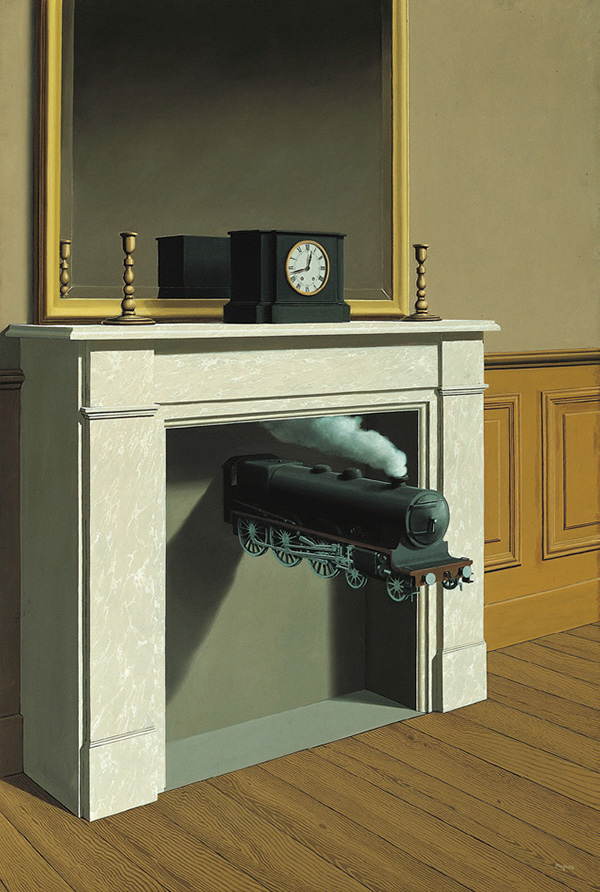ART-PRESENTATION: René Magritte-La trahison des images, Part II
 René Magritte followed Surrealist standards and painted everyday objects in unrealistic settings, a traditional means of prompting the viewer to question his or her own thought process. Magritte’s work is unique in that he maintained a Realist quality in his paintings, something that did not interest most Surrealist artists. This intertwining of reality and fantasy pushed him into a different domain of philosophical artistry than those being explored by his Surrealist contemporaries (Part I)
René Magritte followed Surrealist standards and painted everyday objects in unrealistic settings, a traditional means of prompting the viewer to question his or her own thought process. Magritte’s work is unique in that he maintained a Realist quality in his paintings, something that did not interest most Surrealist artists. This intertwining of reality and fantasy pushed him into a different domain of philosophical artistry than those being explored by his Surrealist contemporaries (Part I)
By Efi Michalarou
Photo: Centre Pompidou Archive
The exhibition “Magritte: La trahison des images” at Centre Pompidou in Paris, offers a completely new approach to the work of René Magritte. Featuring 100 well-known or less familiar paintings, drawings and documents from Public and Private Collections, it offers a fresh look at one of the key figures of Modern art. The exhibition explores the artist’s interest in philosophy, an interest that would culminate in the publication of Foucault’s “Ceci n’est pas une pipe” (1973), born out of the writers discussions with the artist. His most well known work “La trahison des images” (1929) is unique in that it quite clearly tampers with the standard understandings of gravity and space, yet does not seem abnormal. The pipe seems to be floating in space, yet it retains qualities of an object in a real world. The shading on the pipe seems to be true to some perspective, and the viewer does not intuitively question the light source. The pipe is also quite unrealistically large, yet this logic is disregarded as the viewer sees the object as an image. Immediately, then, the viewer recognizes the pipe as both an object and a subject of a painting, embodying both art and reality. In a 1936 lecture, Magritte declared that “Les affinités electives” (1932), marked a turning point in his work, his abandonring of the automatism and random chance of early Surrealism. Showing an egg enclosed in a cage, this was the first of his paintings intended to solve what he termed a “Problem”. After randomness and a “Chance encounter between sewing machines and umbrellas” came a relentlessly logical method that sought solutions to the “problems” of women, of chairs, of shoes, of rain… The exhibition opens with Magritte’s research on these problems, which mark the “urn in his art”. Magritte’s work is characterized by a series of motifs: curtains, shadows, words, flames, bodies in pieces, and more, which he endlessly arranges and re-arranges. The exhibition replaces of these into each to one of painting’s foundational narratives and hence to the philosophical challenge to visual representation. His work had a major impact on a number of movements that followed his death, including Pop, Conceptualism, and the painting of the ‘80s.
Info: Curator: Didier Ottinger, Assistant Curator: Marie Sarré, Centre Pompidou, Place Georges-Pompidou, Paris, Duration: 21/9/16-23/1/17, Days & Hours: Daily 11:00-21:00, www.centrepompidou.fr
